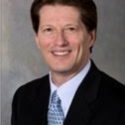Mutually Beneficial Workplace Perks
Providing employee benefits, and offering resources to help employees use them effectively, is a powerful way for companies to attract and retain talent.

Attracting and retaining top talent is more challenging than ever. Employment is up, U.S. unemployment is at a 10-year low, and aging baby boomers are reaching retirement age and rapidly leaving the workforce. In fact, the percentage of working-age Americans in the labor force has dropped to 62.9 percent, near its lowest point in four decades.
One way that businesses can attract employees is to understand their needs and provide a portfolio of benefits that are customized to the employee’s stage of life. Companies that empower employees to understand and effectively use their health care and retirement benefits can create a competitive advantage for themselves. Here are four tips for using employee benefits to help build and sustain a strong workforce.
Appeal to Millennials
Companies should first review their strategies for targeting different age groups. According to a recent survey by Glassdoor, employees aged 18 to 44 prefer benefits or perks to pay raises, unlike those aged 45 to 64.
Employers want to hire millennials, who are poised to climb the career ladder and fill the ranks of exiting baby boomers. Contrary to popular myth, millennials crave job security as much as members of older generations. Qualtrics’ “Millennial Study” found that 77 percent of this generation would be willing to take a salary cut in exchange for long-term job security. Meanwhile, 64 percent of millennials say benefits are an extremely or very important factor in the loyalty they feel toward their employers.
One way that businesses can attract employees is to understand their needs and provide a portfolio of benefits that are customized to the employee’s stage of life.
Help Employees Understand Health Care Options
Some companies are adopting consumer-driven or high-deductible health care plans, with many pairing these with health savings accounts, known as HSAs, or health reimbursement arrangements to keep employee costs low. As employees adopt these solutions, they’ll need the right tools to understand and use their health plans. Interest in HSAs has risen among millennials, but only 50 percent are confident they have a strong understanding of their employee benefits. Consider new ways to increase their knowledge by offering education year-round, not just during the enrollment cycle.
Track Changing Legislation
In addition to updating internal benefit policies, it’s important to track changing health care and retirement plan legislation, as it may have far-reaching implications for how employee benefits are administered. The Kaiser Family Foundation reported that 96 percent of firms with 50 or more full-time employees offered at least one plan that would meet the Affordable Care Act’s minimum value and affordability requirements. This year, Congress passed a two-year delay of the 40 percent excise tax, also known as the “Cadillac Tax,” imposed by the ACA on high-cost employer-sponsored health plans. This change underscores the importance of staying up to date on legislative activity.
Encourage Informed Decision-Making
A strong financial wellness program can empower employees and strengthen their loyalty to the firm. Take time to educate employees about the potential impact of major life events and how to prepare for and estimate the financial impact of future events to minimize the impact on other aspects of their lives.
The Bank of America Merrill Lynch “2017 Workplace Benefits Report” found that the No. 1 issue for employees is saving for retirement. Only one-third of employees take advantage of 401(k) plans and contribute 11 percent or more of their salary to their plan.
To encourage better financial habits, 85 percent of employers plan to utilize a financial wellness program. Companies are expanding their educational resources to help inform employee retirement and health care decisions. These efforts include online financial and investment advice, group and classroom education, and one-on-one support. Consider implementing additional support services and programs, or fully optimize existing ones to engage employees and encourage positive actions.
Invest Smarter
Companies invest an enormous amount of resources in employee benefits, but without proper education and understanding, they may not reap the full value of these benefits. Offering robust plans and ensuring employees have the tools they need to make informed decisions can help build a strong, sustainable workforce. Through education and financial wellness programs, companies can help employees fully utilize benefits. That will help build greater appreciation and loyalty as employees increasingly understand and exercise the offerings available to them.

Robert Arth is executive vice president and head of the northeast region for global commercial banking at Bank of America Merrill Lynch.


